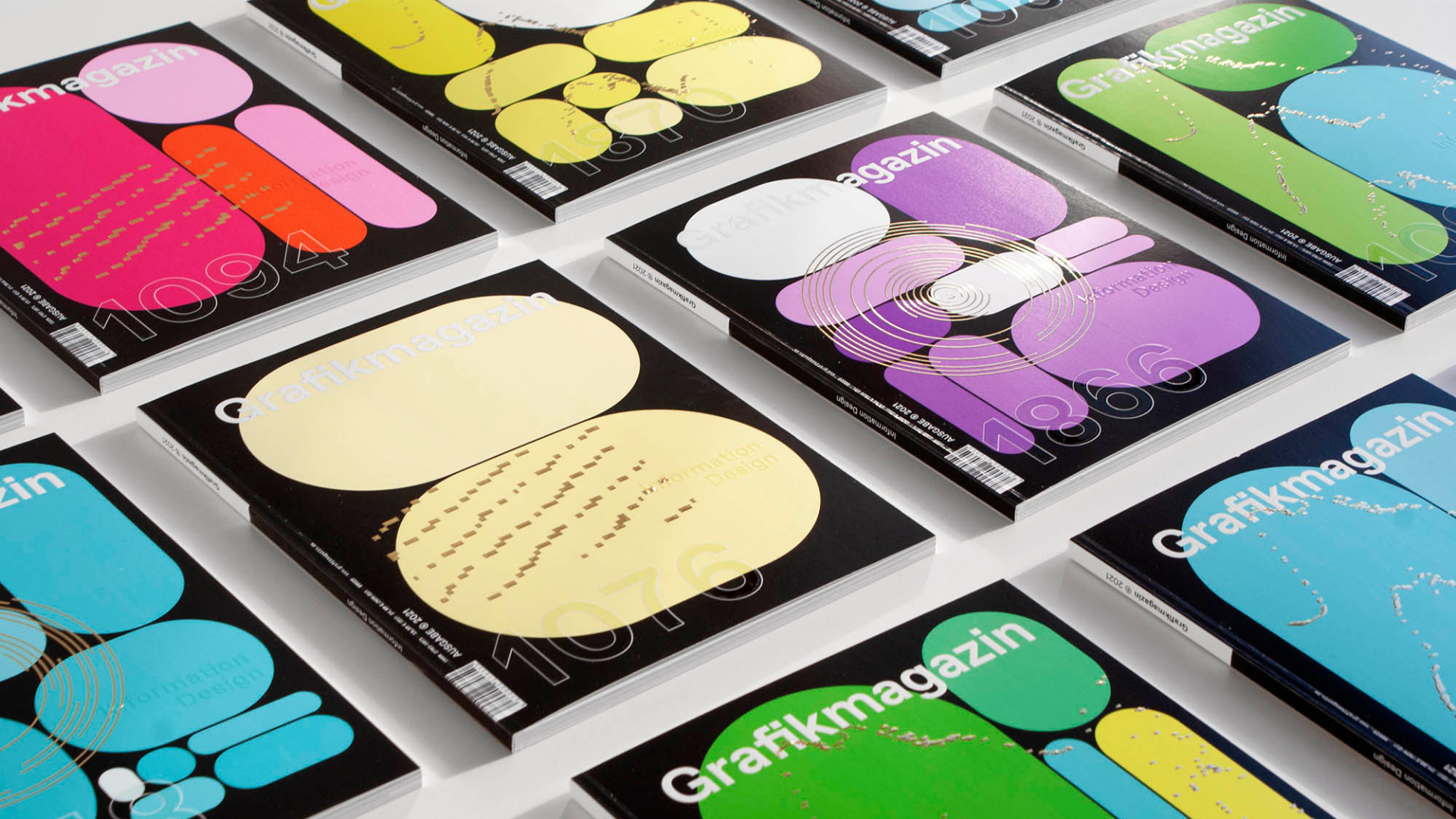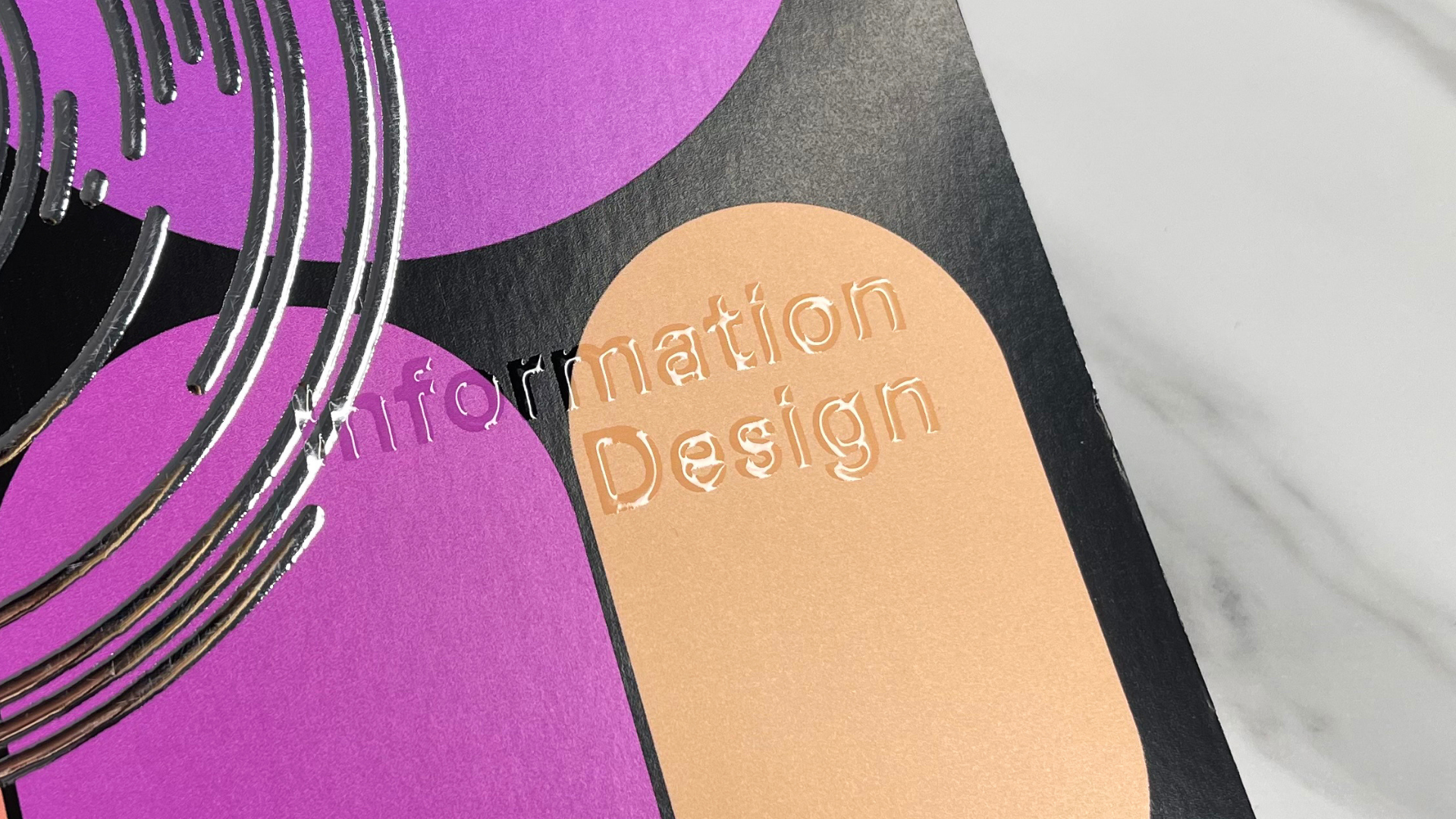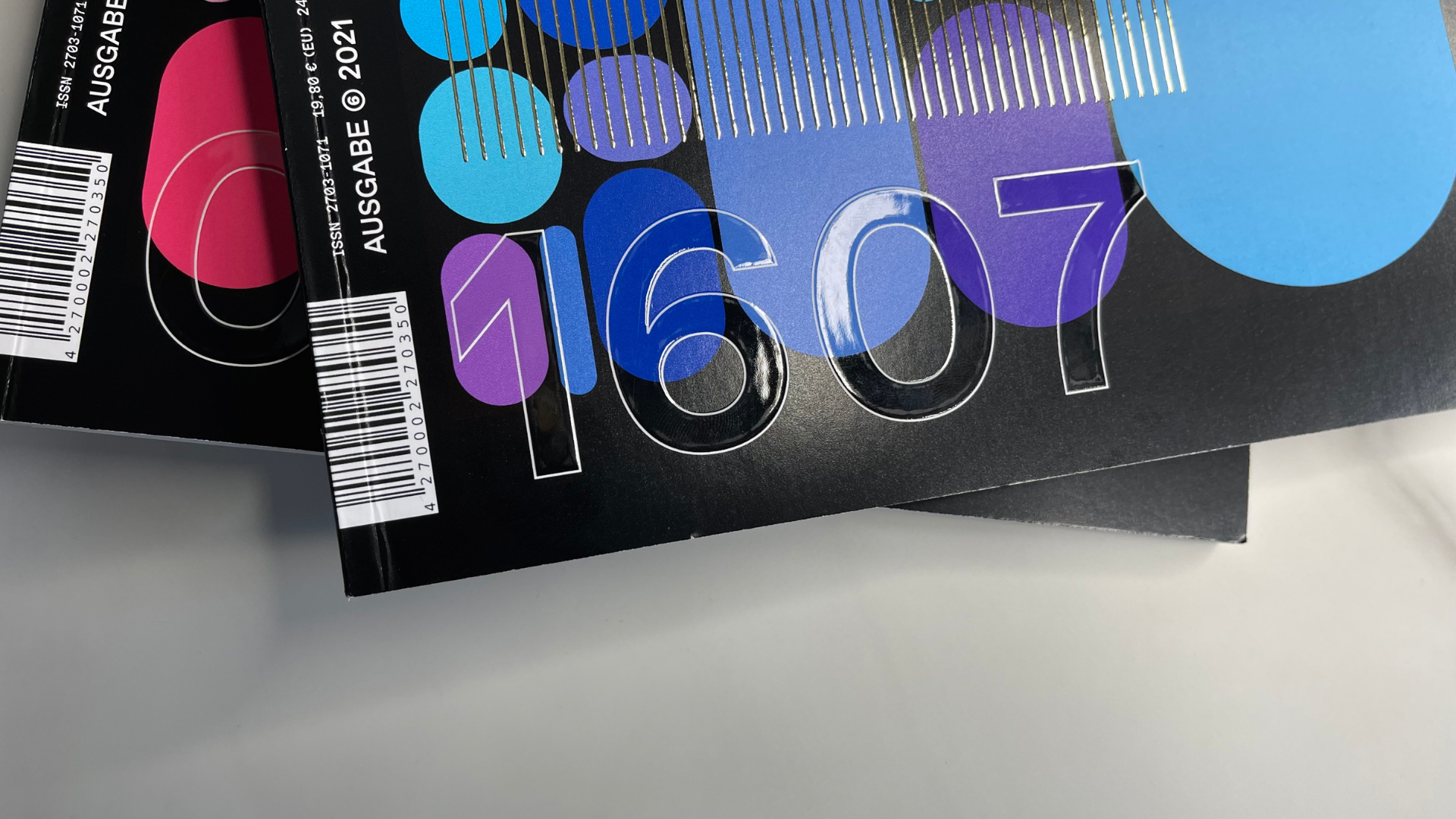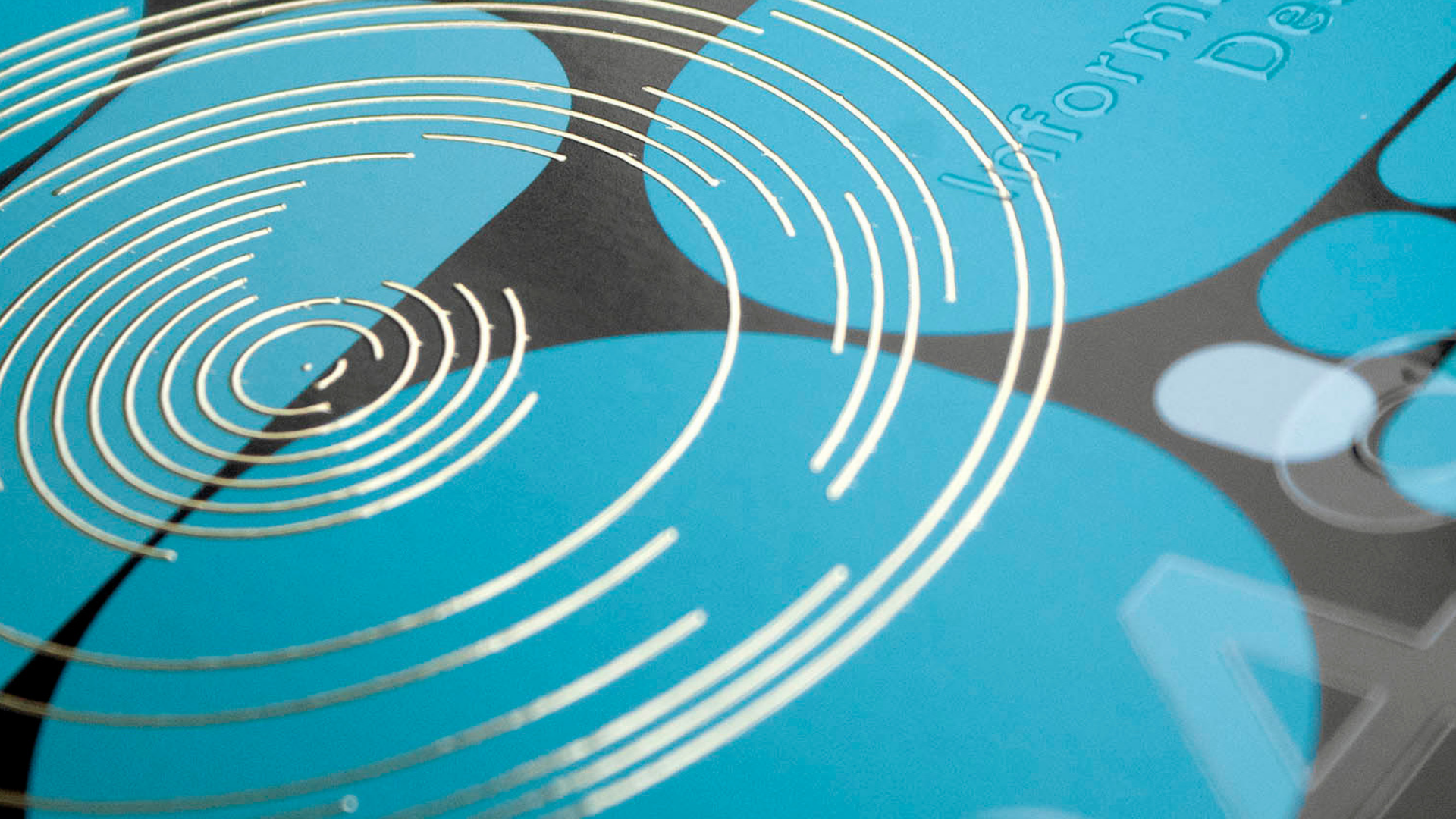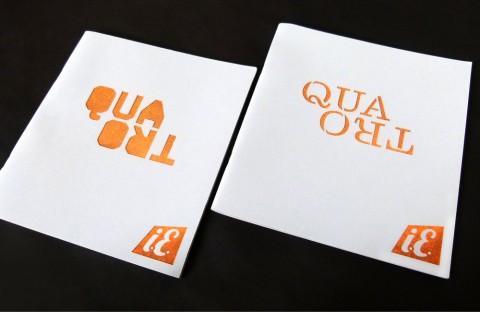Digital printing and finishing have been with us for a long time now, but they’re still often used in some pretty dull ways. Fully aware of this, Germany’s Grafikmagazin decided to use the cover of their recent “Information Design” issue to demonstrate just how diverse that discipline is through the clever-but-subtle pairing of these two digital techniques. And to add that extra “Wow” factor, they ensured that the cover of every issue in the 3,000 copy run was completely unique.
To begin with, each issue’s cover, designed by Grafikmagazin’s Tobias Holzmann, boasts a different combination of shapes and colors, as well as a unique copy number (from 0001 to 3000).
All of these were printed by Konica Minolta at its Langenhagen, Germany showroom on 305 gsm (200 lb.) MetsäBoard Prime FBB Bright [PaperSpecs PRO members: Get Swatchbook!] using its AccurioJet KM-1 digital press. (The interior pages were printed offset by F&W Druck- und Mediencenter on Sappi Magno Matt and Magno Gloss, and Berberich Papier’s Vivus 100.)
A variety of intriguing effects were then added by running the cover through Konica Minolta’s MGI JETvarnish 3D Evolution (Evo) finishing system. Take the “Information Design” call-out on the cover, which was subtly applied using a Clear UV coating.
Then there’s the unique issue copy number to which a raised spot clear varnish was added to give it that oh-so-powerful tactile element. You can see how perfectly registered the digital varnish was applied, hugging the outline of the numbers! It’s a great example of how this piece demonstrates an amazing technical proficiency without being showy.
One of the unexpected benefits of these unique issue numbers was just how much readers took them to heart. Some celebrated the fact that they received a number that corresponded to their birthdates, while another took to Facebook to share that somehow they’d received number “0002.” (So who received 0001? Hmmmm….)
Adding a further dazzling, tactile quality was the use of MGI’s digital foil to add different graphs, diagrams and curves to the surface of the covers. While you don’t get that deep impression you would normally expect from hot foil stamping, you do get a fabulous, slightly raised feel to these design elements. That’s because a polymer adhesive is laid down first, and then foil is placed on top of that, effectively gluing it in place.
Using this type of digital foiling system offers a level of control over the raised effect, to some extent, giving you even more control over the tactile nature of your design. (For a fascinating look at all your foiling options, be sure to download our free Foil Cheat Sheet here.)
The final product is a piece that reminds us that print is always at its best when it combines the right printing and finishing techniques with a strong idea of what it is the designer wants to achieve.

